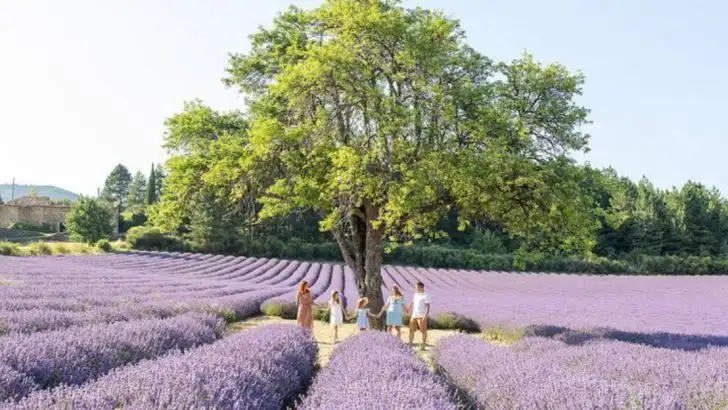June’s mood swings aren’t just for people—your plants feel the heat, chill, and chaos too! One minute it’s scorching sun, the next it’s a surprise cold snap. Your garden can’t keep up with the drama. But some plants laugh in the face of June’s wild weather, shrugging off temperature swings like they own the place. These 26 tough survivors don’t just endure—they thrive. They’re your garden’s secret weapon against June’s unpredictable tantrums. Ready to plant your way through the chaos? Let’s meet the real champions who take June’s rollercoaster ride in stride.
Lavender

Lavender’s intoxicating scent isn’t its only charm. This hardy plant thrives in June’s fluctuating temperatures, offering both fragrance and beauty. Its silvery-green foliage complements its vibrant purple blooms, creating an enchanting visual.
Resistant to drought, lavender requires minimal care once established. Plant it in well-drained soil under the sun, and watch it flourish.
Fun fact: Lavender has been used for centuries for its calming properties. Its essential oil is a staple in aromatherapy, helping to soothe and relax the mind.
Daylily
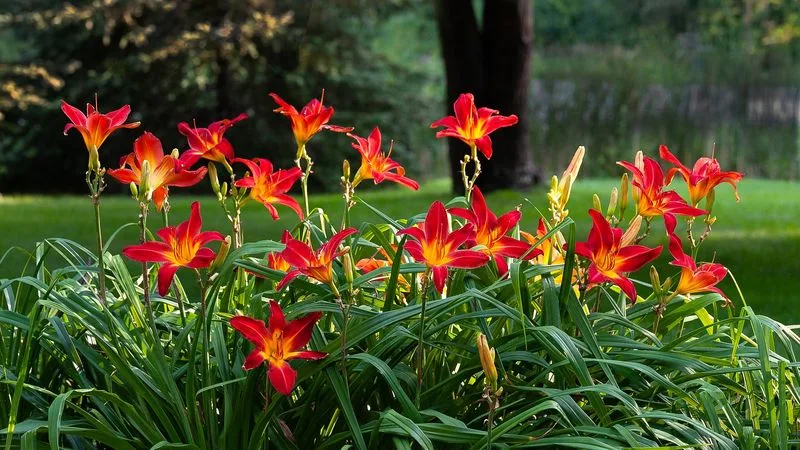
Daylilies are the epitome of resilience. These bright, trumpet-shaped flowers bloom vigorously even as temperatures swing in June. Their adaptability makes them a favorite among gardeners.
Each bloom lasts a mere day, but new buds ensure a continuous display throughout the month. Daylilies are low-maintenance and deter pests naturally.
Did you know? Despite their name, daylilies aren’t true lilies. Their blooms and foliage add a splash of color to any landscape, making them a versatile garden choice.
Sedum
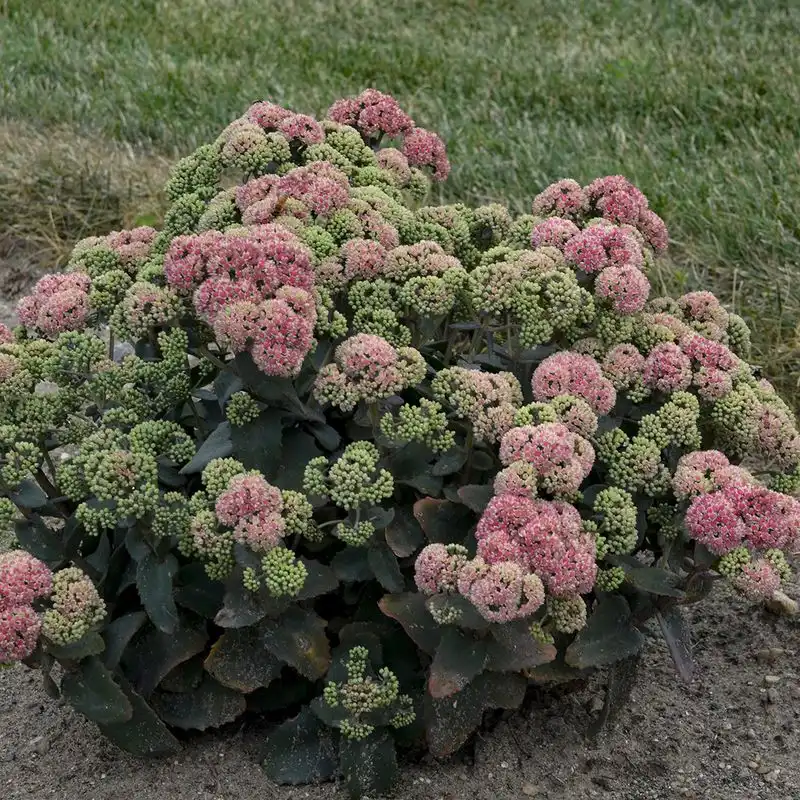
Sedum, also known as stonecrop, is perfect for those tricky temperature shifts in June. Its fleshy, succulent leaves store water, making it drought-resistant.
Sedum’s star-shaped flowers add subtle beauty, attracting pollinators. This groundcover plant is ideal for rock gardens or borders.
Quirky fact: Sedum is part of the Crassulaceae family, which includes over 600 species. It’s not just a pretty face; it plays a role in preventing soil erosion.
Black-Eyed Susan
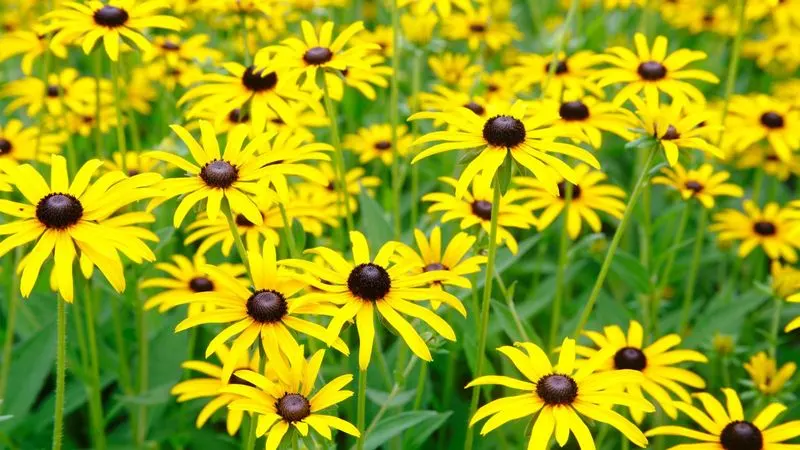
With their bright yellow petals and dark centers, black-eyed susans are a striking addition to any garden. They thrive in June’s unpredictable weather, offering a sunny disposition.
These perennials are easy to grow and require little maintenance. Perfect for attracting butterflies, they bring life to any garden space.
Interesting tidbit: Black-eyed susans are the state flower of Maryland. Their hardy nature and vibrant color make them a beloved choice for gardeners across the U.S.
Hosta
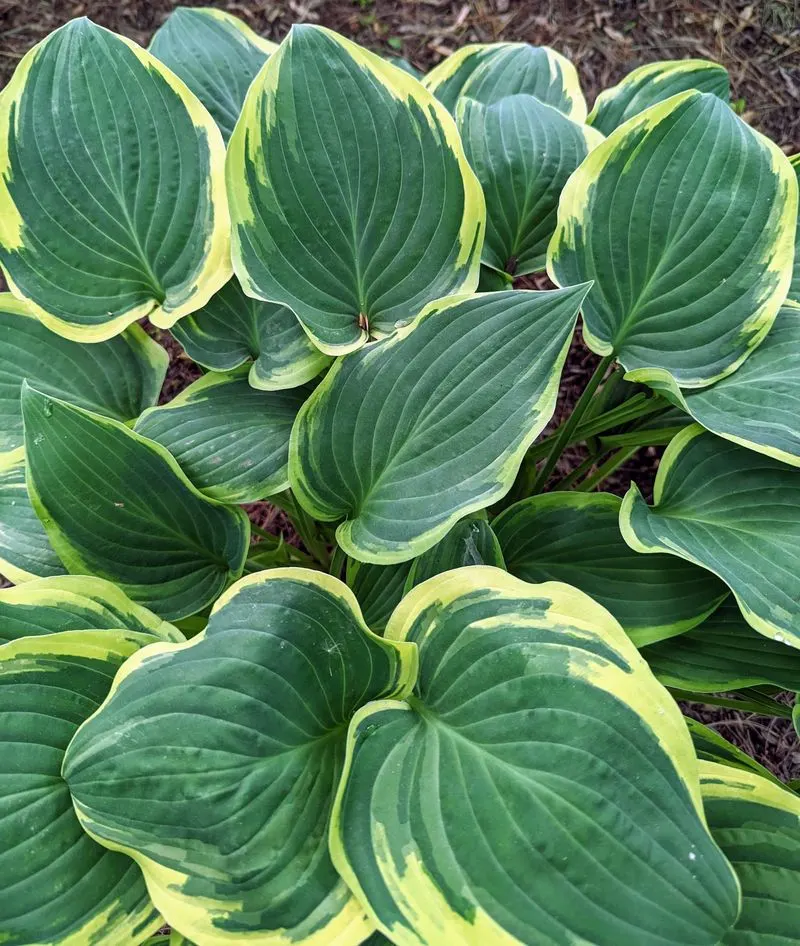
Hostas are the quintessential shade-loving plants. Known for their lush, broad leaves, they thrive even as temperatures swing in June.
Their varied leaf textures and colors add depth to shaded garden beds. Hostas are low-maintenance and resist pests like slugs.
Did you know? Hostas originated in Asia and were brought to Europe in the 1700s. Their adaptability and beauty have made them a staple in gardens worldwide.
Coral Bells
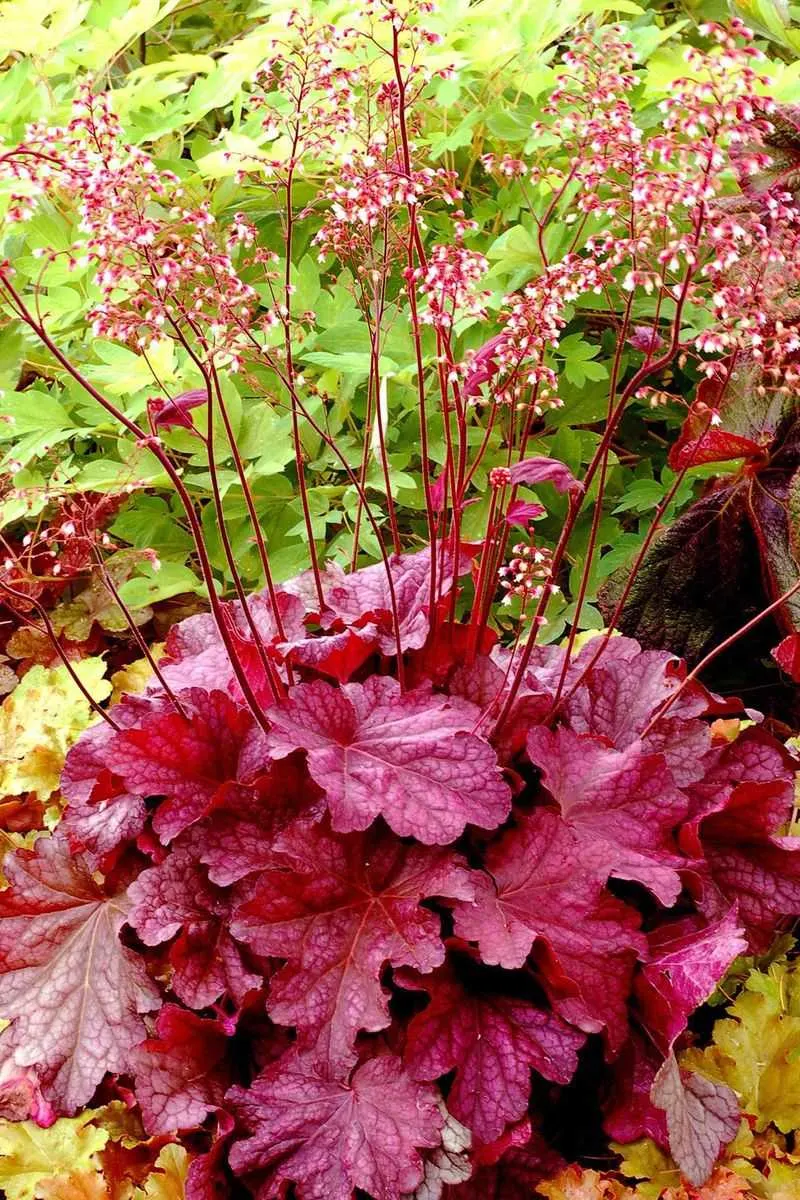
Coral bells bring a burst of color to gardens with their vibrant foliage. They adapt well to June’s temperature fluctuations, thriving in varied conditions.
Their bell-shaped flowers attract hummingbirds, adding life and movement to the landscape. Coral bells are versatile, making them ideal for borders or containers.
Fun fact: Coral bells, or Heuchera, are named after Johann Heinrich von Heucher, a German physician and botanist. Their foliage offers a palette of colors, perfect for creative garden design.
Coneflower

Coneflowers stand tall and proud, enduring June’s temperature swings with grace. Their purple petals and prominent centers attract bees and butterflies.
These perennials are drought-tolerant, requiring little care beyond occasional watering. Coneflowers make excellent cut flowers, extending their beauty indoors.
Quirky tidbit: Native American tribes used coneflowers for medicinal purposes. Today, they’re still valued for their resilience and ability to support pollinators in the garden.
Bee Balm

Bee balm adds a splash of color with its red and pink blooms. Thriving in June, it attracts pollinators, making it an eco-friendly garden choice.
Its aromatic leaves can be used in teas or as culinary herbs. Bee balm requires well-drained soil and full sun to flourish.
Did you know? Bee balm is part of the mint family and was used by Native Americans for its medicinal properties. It remains a popular choice for herbalists today.
Russian Sage
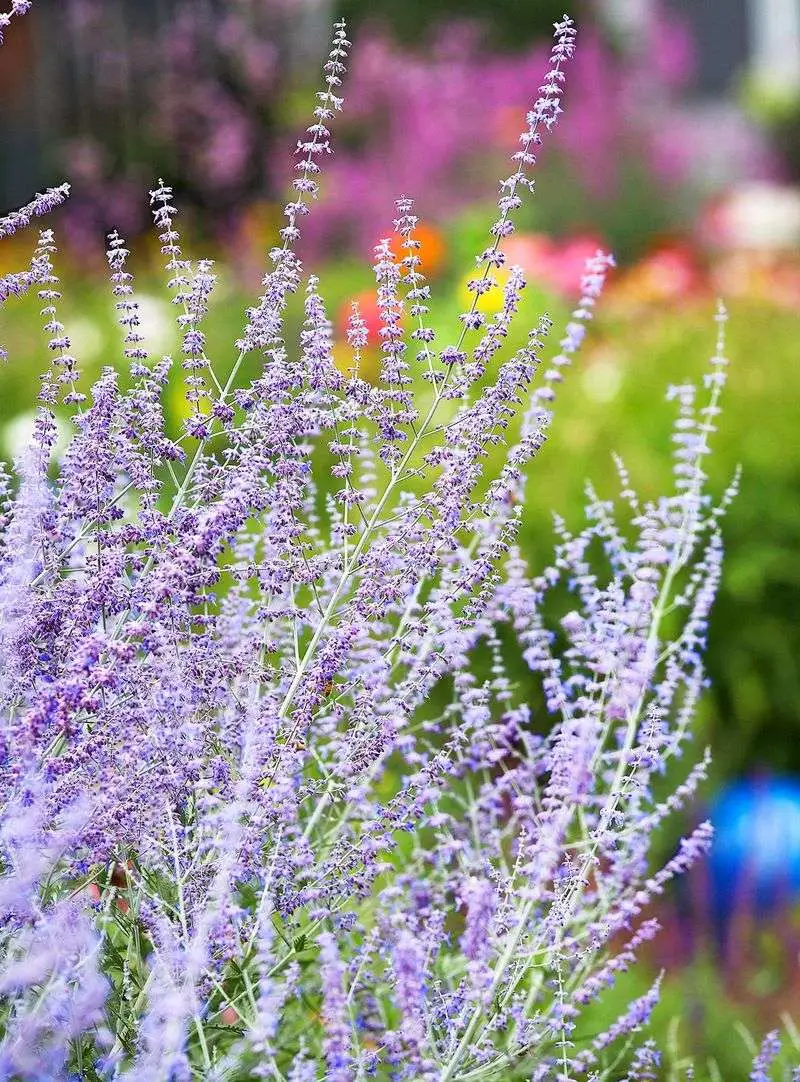
Russian sage brings elegance with its silvery foliage and lavender-blue flowers. It withstands June’s temperature changes with ease.
This drought-tolerant plant thrives in sunny locations, requiring little maintenance. Its wispy blooms add movement and texture to any garden.
Fun fact: Despite its name, Russian sage isn’t a true sage. Its botanical name, Perovskia atriplicifolia, honors Count Perovsky, a Russian statesman and general.
Yarrow
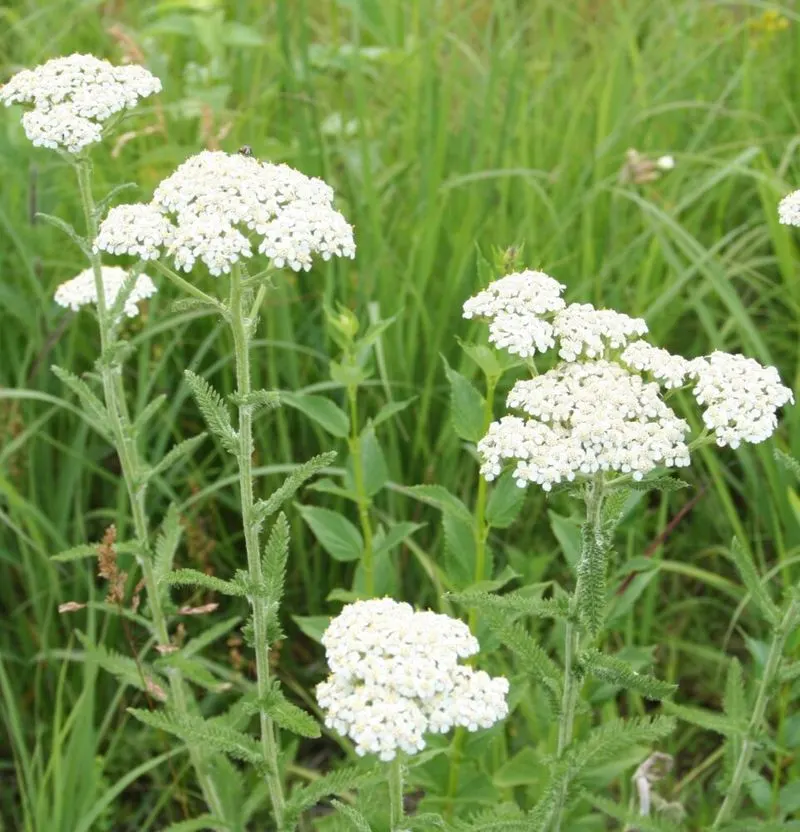
Yarrow’s feathery leaves and clusters of tiny blooms make it a garden favorite. It thrives in June, handling temperature swings with ease.
This tough perennial is drought-resistant and attracts beneficial insects. Yarrow is often used in naturalistic garden designs.
Did you know? Yarrow has been used medicinally for centuries, known for its healing properties. Its scientific name, Achillea, honors Achilles, the Greek hero who supposedly used it to treat soldiers’ wounds.
Echinacea
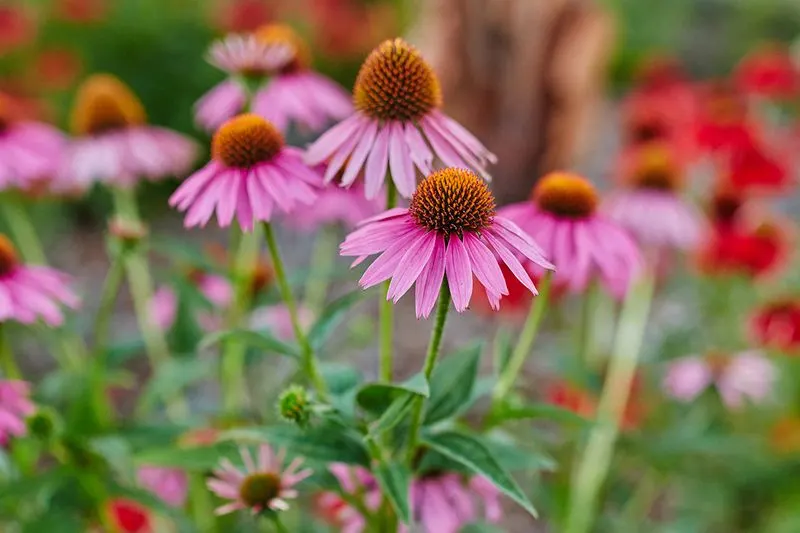
Echinacea, or coneflower, is admired for its resilience and vibrant blooms. It flourishes in June, even as temperatures fluctuate.
These daisy-like flowers attract pollinators, providing ecological benefits. Echinacea is drought-tolerant, making it a low-maintenance choice.
Quirky fact: Beyond its garden appeal, echinacea is renowned for its immune-boosting properties. Herbalists often use it in teas and supplements to support health.
Zinnia
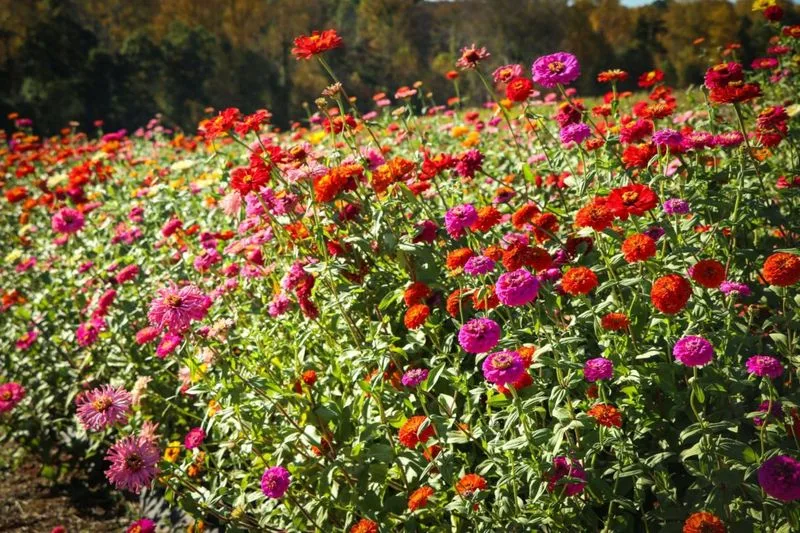
Zinnias are a kaleidoscope of colors, thriving in June’s diverse temperatures. Their bold blooms add a cheerful touch to gardens.
These annuals are easy to grow and attract butterflies. Zinnias prefer sunny spots and require regular watering for best results.
Fun fact: Zinnias are native to Mexico and were named after botanist Johann Zinn. They’re popular for their long-lasting cut flowers, brightening homes and gardens alike.
Marigold
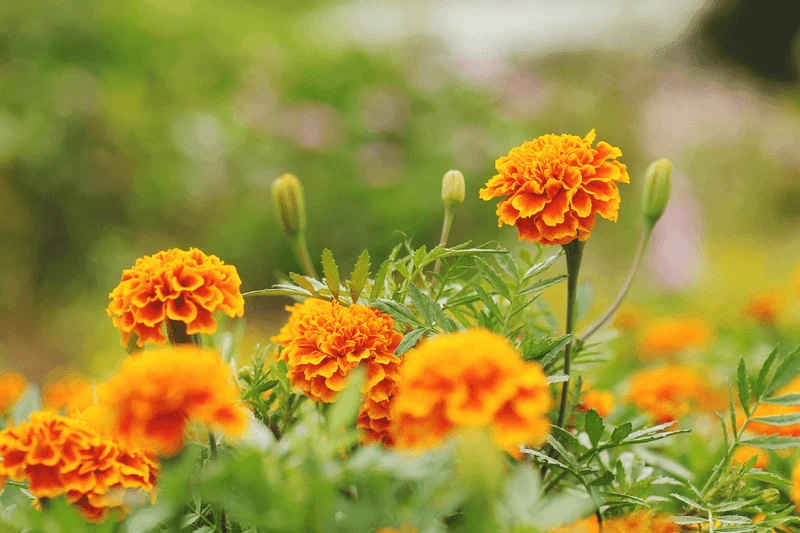
Marigolds bring sunshine to gardens with their vivid orange and yellow blooms. They thrive in June’s varying temperatures, offering color and resilience.
These annuals are known for their pest-repelling properties, making them a practical choice for vegetable gardens. Marigolds require full sun and well-drained soil.
Did you know? Marigolds have been used in religious ceremonies for centuries. Their vibrant blooms symbolize passion and creativity across cultures.
Hydrangea
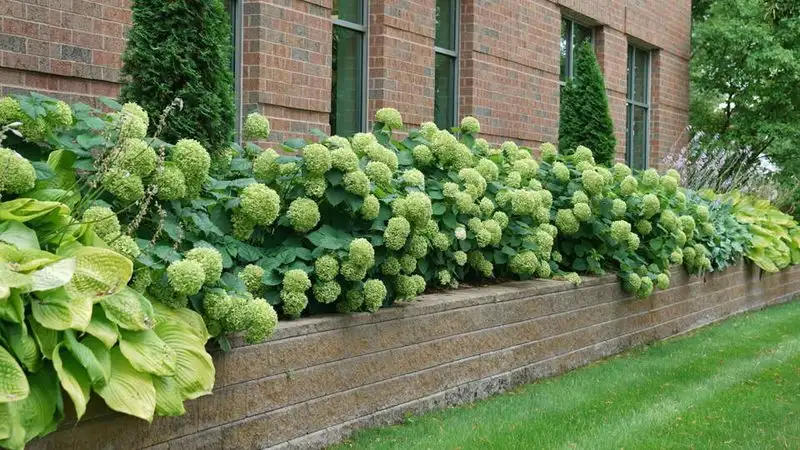
Hydrangeas are garden showstoppers, known for their large, colorful blooms. They adapt well to June’s temperature swings, providing a stunning display.
These shrubs prefer partial shade and moist soil. With proper care, hydrangeas will flourish and bloom abundantly.
Interesting tidbit: The color of hydrangea blooms can change based on soil pH. Acidic soil produces blue flowers, while alkaline soil results in pink blooms.
Catmint
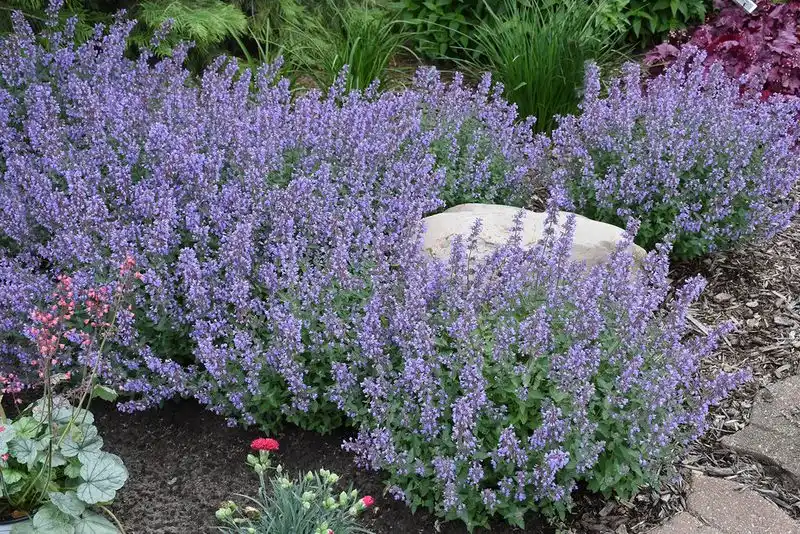
Catmint, or Nepeta, is loved for its aromatic foliage and lavender-blue blooms. It thrives in June’s unpredictable temperatures, adding charm to any garden.
This perennial is drought-tolerant and attracts pollinators. Catmint is ideal for borders or as a groundcover, requiring minimal maintenance.
Fun fact: Catmint is related to catnip, a favorite of felines. While it may not have the same effect, its beauty and resilience make it a garden staple.
Coreopsis
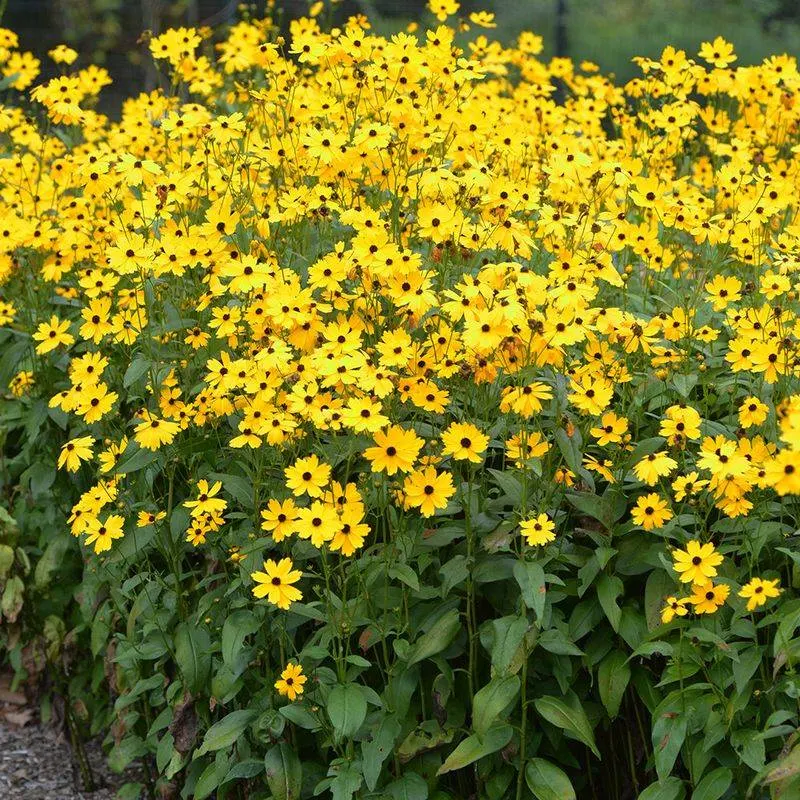
Coreopsis, also known as tickseed, brightens gardens with its cheerful yellow flowers. It adapts well to June’s temperature swings.
These perennials are low-maintenance and drought-tolerant, perfect for sunny spots. Coreopsis attracts butterflies, enhancing garden biodiversity.
Did you know? Coreopsis is the state wildflower of Florida. Its name comes from the Greek words for “bug-like,” referring to its seed shape.
Blanket Flower
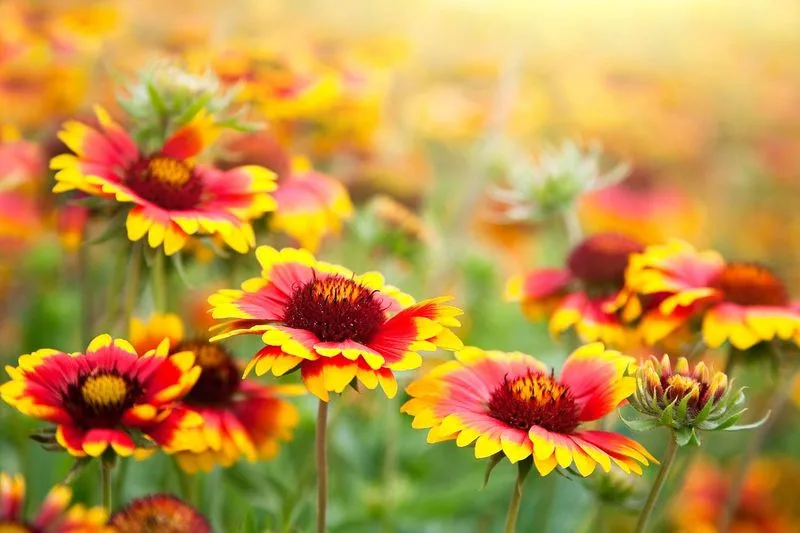
Blanket flowers, or Gaillardia, bring warmth to gardens with their fiery red and yellow blooms. They thrive in June’s variable temperatures.
These perennials are drought-tolerant and low-maintenance. Blanket flowers attract pollinators, supporting garden ecosystems.
Quirky fact: The name “blanket flower” comes from their resemblance to Native American woven blankets. Their vibrant colors and patterns make them a standout choice.
Lantana

Lantana is a tropical wonder, flourishing in June’s heat. Its clusters of bright flowers change colors as they age, adding intrigue.
This drought-tolerant plant attracts butterflies and requires minimal care. Lantana thrives in full sun and well-drained soil.
Did you know? Lantana is considered invasive in some regions. However, its vibrant blooms and resilience make it a popular ornamental choice for gardens.
Gaura

Gaura, or beeblossom, offers an airy elegance to gardens. Its delicate pink and white blooms sway gracefully, thriving in June’s temperature swings.
These perennials are drought-tolerant and prefer sunny spots. Gaura adds movement and texture to borders or mixed plantings.
Fun fact: Gaura is native to North America and attracts pollinators. Its long blooming season makes it a valuable addition to any garden landscape.
Agastache

Agastache, or hyssop, is a fragrant delight. Its spikes of purple and pink flowers thrive in June, enduring temperature changes with grace.
This perennial attracts pollinators and is drought-tolerant, making it a practical choice. Agastache prefers full sun and well-drained soil.
Quirky tidbit: Agastache is part of the mint family and is known for its aromatic leaves. It’s often used in teas and culinary dishes for a hint of anise flavor.
Salvia

Salvia stands out with its tall spikes of purple and blue flowers. It flourishes in June, coping well with temperature fluctuations.
These perennials are drought-tolerant and attract pollinators. Salvia is ideal for sunny spots and requires minimal maintenance.
Did you know? Salvia is a member of the mint family, with over 900 species worldwide. Its vibrant blooms and resilience make it a garden favorite.
Penstemon

Penstemon, or beardtongue, is admired for its tubular blooms and rich colors. It thrives in June, even with temperature swings.
These perennials attract hummingbirds and require well-drained soil. Penstemon adds vertical interest to garden beds and borders.
Fun fact: Penstemon is native to North America and features over 250 species. Its name comes from the Greek words “pen,” meaning “five,” and “stemon,” referring to its five stamens.
Verbena
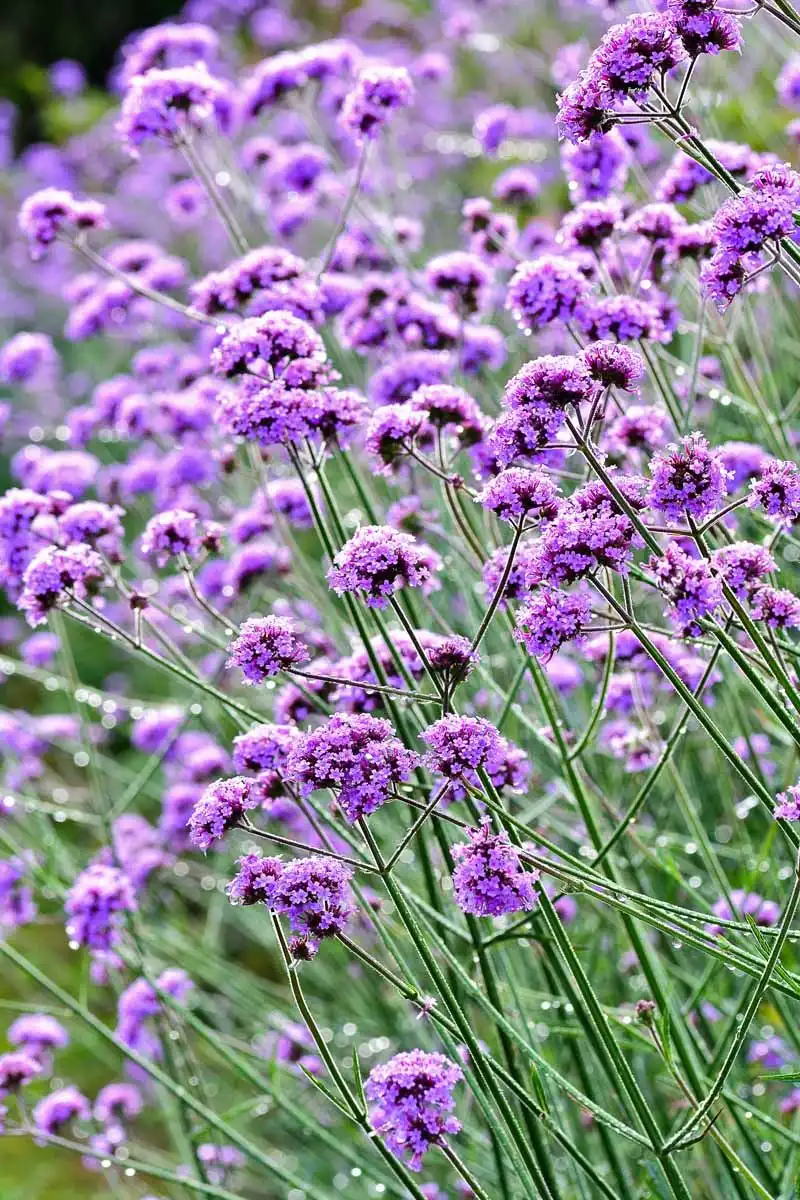
Verbena enchants with its clusters of small, colorful blooms. It thrives in June’s warmth, offering beauty and resilience.
These annuals or perennials attract pollinators and prefer sunny locations. Verbena is ideal for containers, borders, or groundcovers.
Quirky tidbit: Verbena has been used in traditional medicine and folklore. Its flowers symbolize healing and protection, adding a touch of mystery to gardens.
Snapdragon
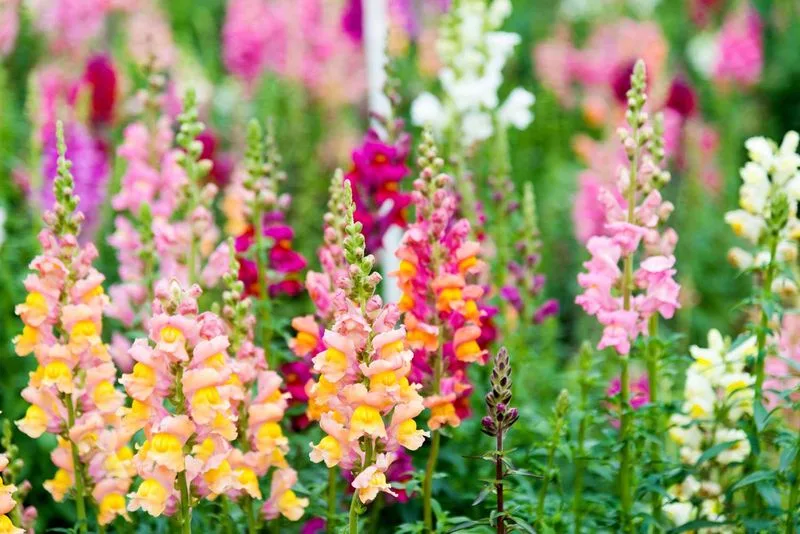
Snapdragons bring drama with their tall spikes and unique blooms. They thrive in June, enduring temperature swings with style.
These annuals are versatile, suited for beds, borders, or containers. Snapdragons attract pollinators, enhancing garden biodiversity.
Did you know? Snapdragons get their name from the dragon-like shape of their blooms. When pinched, the flowers “snap” open and shut, delighting children and gardeners alike.
Feverfew
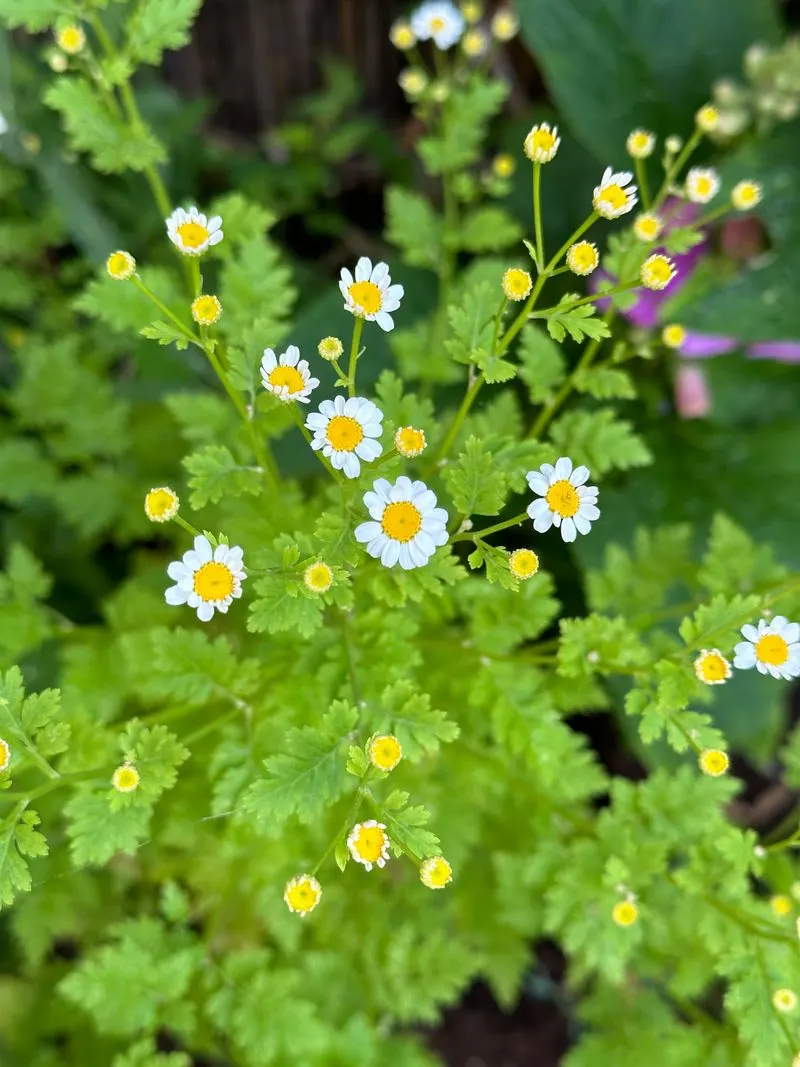
Feverfew is a charming herb with daisy-like blooms. It thrives in June’s varied temperatures, offering beauty and utility.
This perennial is known for its medicinal properties, often used to relieve headaches. Feverfew prefers sunny spots and well-drained soil.
Fun fact: Feverfew’s name comes from the Latin “febrifugia,” meaning “fever reducer.” It’s been used in herbal remedies for centuries, adding historical depth to gardens.
Moss Rose
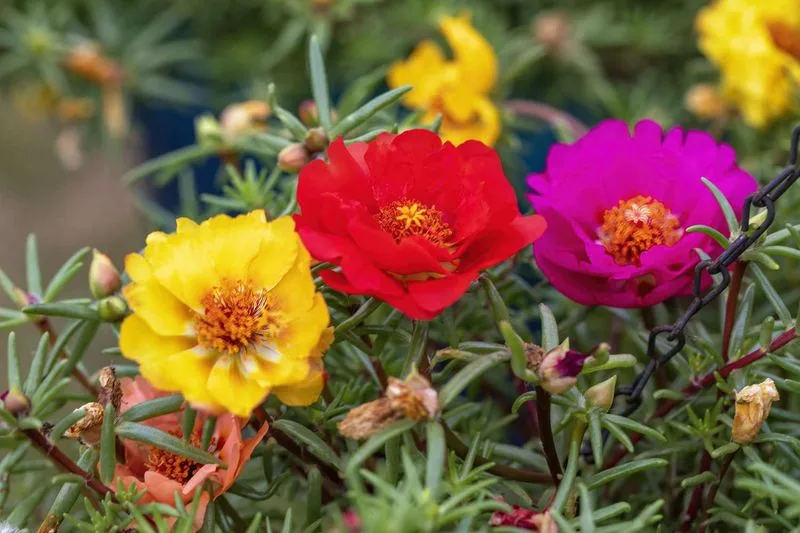
Moss Rose, or Portulaca, is a tough little succulent known for its vibrant, multi-colored blooms and ability to thrive under the harshest conditions. With its fleshy, drought-tolerant leaves, it basks in the sun, unbothered by the searing heat of June.
This plant requires minimal water and attention, making it ideal for those who prefer a low-maintenance garden. Its fast-growing nature makes it perfect for ground cover. Each flower lasts only a day, but the plant continuously produces new buds, ensuring a colorful display all season long.
Moss Rose’s endurance against harsh weather makes it a must-have for any resilient garden.

